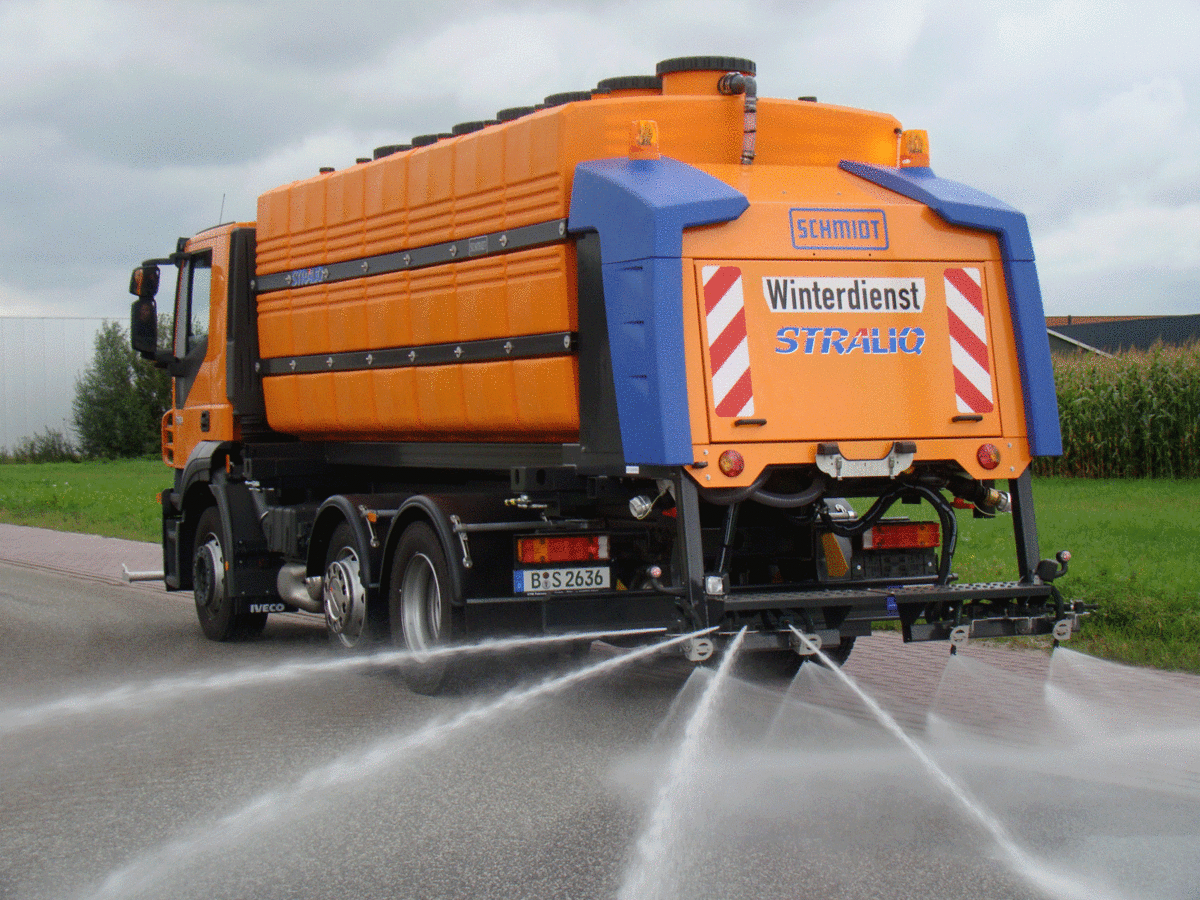The Schmidt Straliq is specially designed for spraying roads and many other places. Spraying reduces salt usage and not only preserves the environment but saves your budget as well.
Professional spraying specialist
The Schmidt Straliq was designed for large carrier vehicles and utilises the new 3-lane spraying technique, which was developed for the Combi Soliq. The high-quality polyethylene tanks are suitable for all de-icing materials. As a standard feature, the Straliq can spray 3 lanes at once with its 7 500 to 15 000 litres. It is also possible to set the spraying width for each lane (3,5 metres). Optionally, half of the outer lanes can be switched off. The Straliq is easy to operate from the driver’s cabin using the CL control.
The heart of the dosage system is either one diaphragm pump (max. 295 l/min) or a centrifugal pump (max. 700 l/min). The salt solution is released by variable flow nozzles at the rear of the vehicle. The main advantages of the variable flow nozzles lies in the fact that a constant pressure is maintained and no fog is formed.
Reliable drive
The Straliq can be driven using different systems. The easiest solution is to connect it to the vehicle’s hydraulics. If no vehicle hydraulics are available, an innovative and efficient alternative is offered by Rotopower, where the rotation of the rear axle is directly taken off the hub and can be used without any loss of power. The Straliq can also be fitted with a diesel engine.
Straliq combatting dust pollution
Fine dust pollution is currently a major issue. For this reason, tests were carried out to reduce the polluting effects of fine dust. The solution: spraying calcium chloride. Its binding effect ensures that fine dust remains stuck to the road surface. In this way, the Straliq also offers an ideal solution for controlling fine dust.
Straliq’s advantages
- Spraying is fast and effective.
- It offers an optimal spraying pattern, even with minimal dosage (4 g/m² active material)
- The higher levels of residual salt compared to prewetted salt increases road safety.
- There are significant savings in de-icing material costs, particularly up to -5°C.
- Spraying protects the environment because less salt is used.


